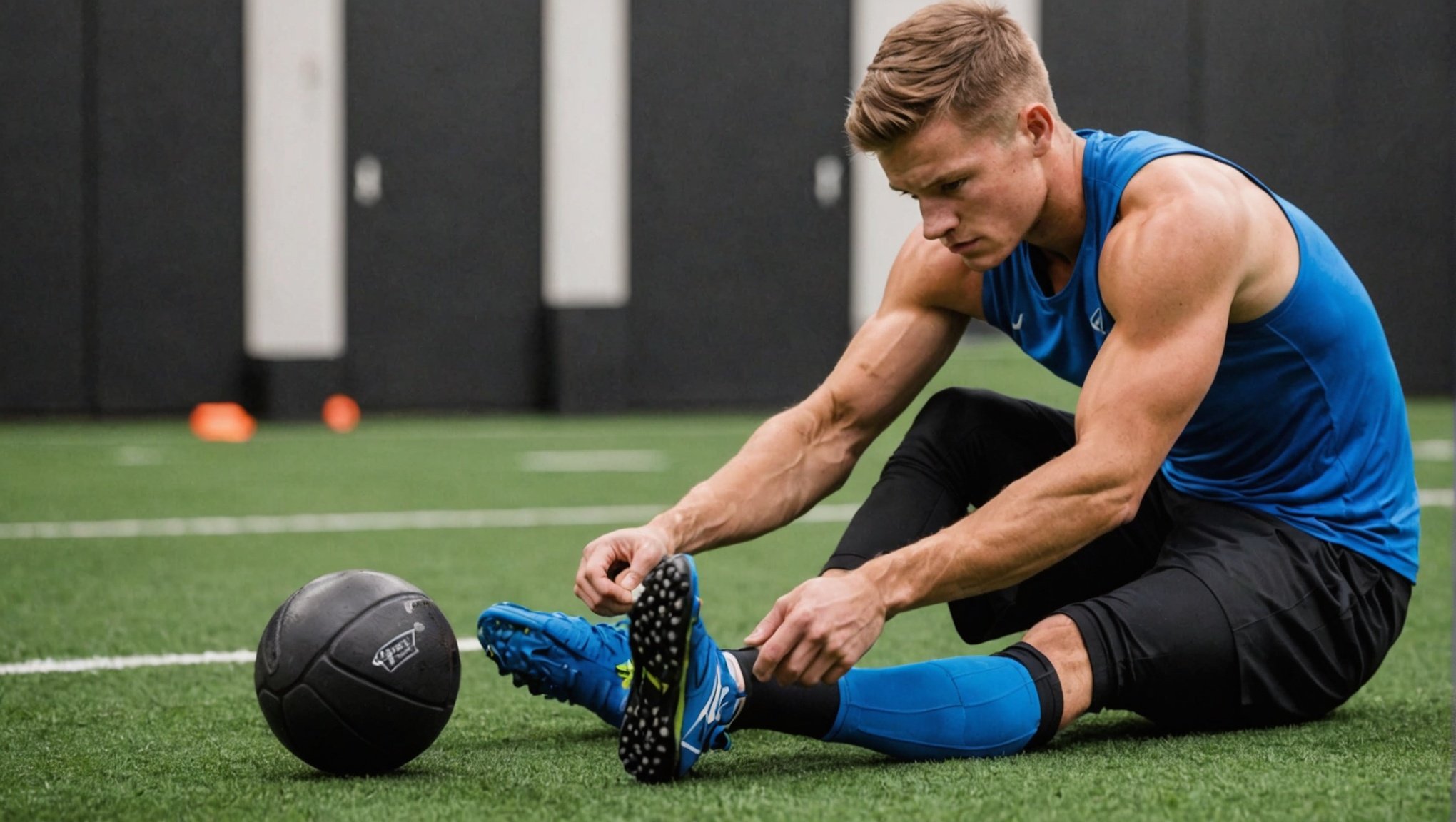Smart Strategies for Tailoring Training Intensity in Young Athletes to Avoid Overuse Injuries
Understanding the Risks of Overuse Injuries in Young Athletes
When it comes to young athletes, the pursuit of excellence in sports is often balanced against the risk of overuse injuries. Overuse injuries, which occur due to repetitive stress on the body without adequate recovery, are a significant concern for coaches, parents, and the athletes themselves. These injuries can range from tendonitis and stress fractures to more severe conditions like osteochondritis dissecans, a joint condition that can lead to long-term damage if not managed properly.
To mitigate these risks, it is crucial to understand the underlying factors that contribute to overuse injuries. One key concept is the principle of progressive overload, which, while essential for athletic development, must be balanced with adequate recovery periods to prevent overtraining.
In parallel : Revolutionizing Tactical Training in Field Sports: The Power of Enhanced Reality Systems
The Importance of Periodization in Training Programs
Periodization is a systematic approach to training that involves varying the intensity, volume, and type of training over specific periods. This method is essential for young athletes as it helps in avoiding the monotony of constant high-intensity training and allows for strategic recovery phases.
Structuring Training Cycles
A well-designed periodization plan should include several key components:
This might interest you : Crafting a Customized Recovery Strategy for Tennis Athletes Battling Chronic Wrist Injuries
- Macrocycle: This is the overall training plan that spans an entire season or year. It includes multiple mesocycles and microcycles.
- Mesocycle: These are smaller blocks within the macrocycle, typically lasting several weeks to a few months. Each mesocycle focuses on a specific aspect of training, such as strength, endurance, or speed.
- Microcycle: This is the smallest unit of the periodization plan, usually lasting a week. It details the daily workouts and recovery days.
Example of a Periodized Training Plan
Here is an example of how a periodized training plan might look for a young track and field athlete:
| Phase | Duration | Focus | Example Workouts |
|---|---|---|---|
| Pre-Season | 4-6 weeks | Building General Endurance | Extensive Tempo Runs (55-80% intensity), Strength Conditioning (lower body) |
| Build-Up | 4-6 weeks | Increasing Intensity | Speed Endurance (90-100% intensity), Technique Drills (block starts, acceleration) |
| Competition | 8-12 weeks | Maintaining Peak Performance | Maximum Speed Work (30m-60m sprints), Recovery and Tapering |
| Off-Season | 4-6 weeks | Active Recovery | Cross-Training, Light Strength Training, Flexibility Routines |
Tailoring Training Intensity Based on Energy Systems
Different sports and events require the development of specific energy systems. Understanding these systems is crucial for tailoring training intensity to the needs of young athletes.
Energy System Chart
Here is a breakdown of how different energy systems can be trained using the Energy System Chart:
| Energy System | Intensity | Duration | Rest | Example Workouts |
|---|---|---|---|---|
| Maximum Speed | 90-100% | 30m-60m | Full Recovery | 4x80m sprint efforts with full recovery |
| Speed Endurance | 90-100% | 60m-120m | 5-10 minutes | 5x60m sprints with 90s rest |
| Extensive Tempo | 55-80% | 400m-600m | 2-3 minutes | 6x600m at 70% effort |
| Continuous Tempo | 40-60% | 1000m+ | NA | 3km continuous run |
This chart helps coaches plan training programs that target specific energy systems, ensuring that young athletes are prepared for the demands of their sport without overreaching.
The Role of Strength Training in Injury Prevention
Strength training is a critical component of any athletic development program, particularly for young athletes. It not only enhances athletic performance but also plays a significant role in injury prevention.
Key Principles of Strength Training
- Progressive Overload: Gradually increase the weight or resistance to challenge the muscles and promote strength gains.
- Functional Exercises: Focus on exercises that mimic the movements of the sport, such as squats, lunges, and deadlifts.
- Core Strength: Develop strong core muscles to improve stability and reduce the risk of injuries.
- Flexibility and Mobility: Incorporate flexibility and mobility exercises to maintain range of motion and reduce muscle imbalances.
Monitoring and Adjusting Training Based on Feedback
Regular monitoring of athletes is essential to ensure that the training program is effective and safe. Here are some ways to monitor and adjust training:
Subjective Feedback
- Use subjective rating systems where athletes rate their perceived exertion and recovery.
- Conduct short feedback sessions after workouts to gauge the athlete’s physical and mental state.
Objective Metrics
- Track performance metrics such as sprint times, jump heights, and endurance test results.
- Monitor physiological markers like heart rate, blood lactate levels, and muscle soreness.
Adjusting the Training Load
- If an athlete shows signs of fatigue, excessive soreness, or declines in performance, adjust the workout load by reducing intensity or volume.
- Incorporate rest days or active recovery sessions to allow for adequate recovery.
Integrating Recovery and Mental Health into Training Programs
Recovery and mental health are often overlooked but are crucial components of a comprehensive training program.
Recovery Techniques
- Active Recovery: Incorporate light exercises like cycling, swimming, or yoga to promote blood flow and aid in recovery.
- Nutrition and Hydration: Ensure athletes are well-nourished and hydrated to support recovery and performance.
- Sleep: Emphasize the importance of adequate sleep for physical and mental recovery.
Mental Health Support
- Communication: Encourage open communication between athletes, coaches, and support staff to address mental health concerns.
- Stress Management: Teach athletes stress management techniques such as mindfulness, meditation, and deep breathing exercises.
- Team Dynamics: Foster a positive team environment that supports mental well-being and reduces stress.
Practical Tips for Coaches and Parents
Here are some practical tips for coaches and parents to help tailor training intensity and prevent overuse injuries in young athletes:
Age-Appropriate Training
- Tailor training programs to the specific age and developmental stage of the athlete.
- Focus on technique and skill development in younger athletes, gradually increasing intensity and volume as they mature.
Flexibility and Mobility Exercises
- Incorporate regular flexibility and mobility exercises to maintain range of motion and reduce muscle imbalances.
- Examples include dynamic stretching, foam rolling, and mobility drills.
Communication and Feedback
- Maintain open communication with athletes to monitor their physical and mental state.
- Use feedback to adjust training programs and ensure athletes are not overreaching.
Balancing School and Sports
- Ensure that young athletes have a balance between their academic and athletic commitments.
- Encourage time management skills and support systems to help manage stress.
Tailoring training intensity for young athletes is a complex but crucial task that requires a holistic approach. By understanding the risks of overuse injuries, implementing periodized training programs, and integrating strength training, recovery, and mental health support, coaches and parents can help young athletes achieve their full potential while minimizing the risk of injury.
As Master Coach Susan Hobson emphasizes, “A comprehensive training program for athletes must go beyond just physical training. It should include nutrition, sleep, recovery, and mental health to ensure the ‘whole athlete’ is supported”.
By adopting these smart strategies, we can foster a generation of athletes who are not only high performers but also healthy and resilient, both on and off the field.







